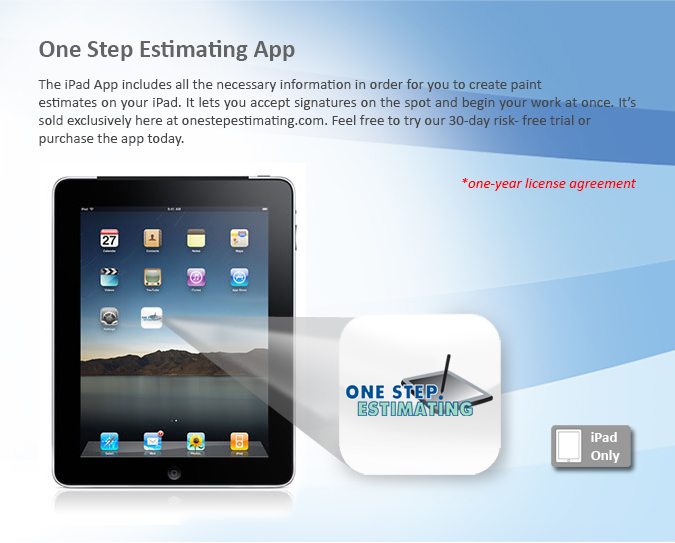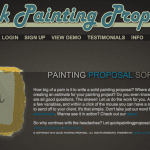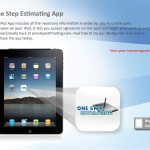“Everything gets Measured”
That was biggest takeaway from an Estimating course I took from Bob Cusumano last year. Measuring and Estimating was one thing my husband and I had always disagreed on. He could walk a job, know how long it would take and be able to say how much. Of course, he had been doing it for 25 years.
When I started doing the estimates a few years ago, I could not do that! So I had the crew keep notes on certain tasks for a year (yes, I drove them crazy!) to create production rates that I then used as items in Quickbooks. I do a lot of estimates off of blueprints, so it really helped.
“Eyeball vs Measured”
Rob and I still disagreed about whose way was better, several times we did estimates together, he did his “eyeball method” and I did my “measure everything method”. Most times we were within 10% of each other, but most times he was a little less!
After he took that course with Bob, he saw the light and agreed to measure everything.
Getting the Measurements
I usually show up do an estimate with all my stuff in a bag, tape measure, notepad, camera, etc. I walk the job site with the homeowner and discuss the areas to be painted and point out areas of concern, taking notes. I then ask the HO to sit down and look at our portfolio, a book with testimonials, case studies, project options, license info, etc. while I went back and measured.
I used a hand held tape measure and a wheeled one, writing floor plans and measurements out. Sometimes it was awkward balancing the notepad, calculator, camera, and measuring tape. I found an app that you could use on your phone to measure, but it was difficult to use. I found an electronic tape measure and that made it easier.
Creating the Quote
I still had to add up my measurements off my notes and do some computing. I’d try and do that before the customer finished looking at the portfolio, so I wouldn’t have them watching as I apparently “pulled figures out of my head”!
If it was a simple job, I’d provide a handwritten estimate on the spot using a template form I had created that I just had to enter the scope, materials and price. If it was a larger job, or had an aspect that I needed to check material prices or production rates on, I would have to do a follow up, either in an email or person. I really wanted to streamline this process, I had been using my IPad to show photos of our work, and I knew there was software to do estimates, so I decided to explore the options.
Estimating Software on an IPad
I found three different programs to look at. With all three of them, the constant is that you must know your production rates and hourly rate, although there are some preloaded and can be changed. I found it very easy to walk around with the just the IPad and laser measure.
Here is a comparison of features.
| Feature | Propeller | Quick Paint Proposal | One Step for IPad |
| Platform | Web Based | Web Based | IPad App |
| Price | Free to $60 month | Free to $25 month after $95 set up fee | $600 year/$300 for additional license |
| Lead Tracking | Yes | No | No |
| Calendar | Yes | Yes | No |
| Employee Info | Yes | No | Yes |
| Production Rates | No | Multiplier | Yes |
| Time Reports | Yes | No | Yes |
| Job Costing | Yes | Yes | Yes |
| Material Qty | Yes | Yes | Yes |
| Order Materials | Yes | Yes | No |
| Tax Rate | Manually add % | Calculates by State | Manually add % |
| Adding Content | Yes | Yes | Yes |
| Contract Terms | Manually add | Manually add | Customized/added |
| QB Integration | Coming | No | Coming |
| Line Items | Yes | Yes | Yes |
| Customize Proposal | Yes | Yes | Yes |
| Email Estimates | Yes | Yes | Yes |
| Training | Yes | No | Yes |
| Support | Weekly Class | Newsletter, webinar, email. phone |
Platforms for Estimating Software
Propeller and QPP are both web based, the One Step is an Application specifically developed for the IPad (there is also a Tablet version). I am in a rural area and there were times I did not have service, and the One Step was still usable. The One Step also functioned better on the Ipad because it uses functions of the IPad, the scroll wheel was much easier to select items than the keyboard that Propeller and QPP required you to use. If you were using a desktop computer to write up quotes at home, than typing information in would be easier.
Lead Tracking
Propeller really shined here, it had a very nice flow chart to manage leads.
Calendar
Propeller had the best features here, while the others you could schedule a job, Propeller had a calendar that you could see a day/week/month at a glance.
Production Rates
This was the where the big difference was.
- Propeller-You still had to know how many hours a job would take, and enter by hours, not area. It works great for Time and Material, it did have fields for material markup as well.
- Quick Painting Proposal-This had a multiplier, you entered in how many square feet of a specific task and it multiplied it by a set number (that could be edited)
- One Step-It was much simpler on One Step, all you had to do was enter the measurements of a room and select the scope of work from a pop up wheel. The rates are preset, but editable, and come from PDCA guidelines, I found them very accurate.
Adding Content
All three allowed you to edit the content in the scope of work, materials, terms, contract, etc. They all generated very nice looking proposals that can be emailed, and the customer can sign and accept on the spot with the One Step.
Support
All three seem to have some type of support
- Propeller-They host weekly classes in a “university” type of class
- Quick Painting Proposal– Steve was very responsive and helpful
- One Step-Webinars, email, newsletter and phone support
All three were very good programs, my opinion is that it depends on how you do your estimates. I found the first two were better suited to doing estimates from the office after taking measurements and collecting information.
- Propeller– Great if you do Time and Material and the person doing the estimates knows how many hours to assign to a task. The scheduling of leads, jobs and employees can be used as a basic CRM program. It also has a map, so you could have employees log in and see the directions.
- Quick Painting Proposal-Great program to create very nice looking proposals. You can easily add predefined items into a proposal and do a Performance Analysis. There are many options for adding text to a proposal. It is very customizable.
- One Step-If you have an estimator going out to quote jobs, I feel this works best, measure the area, add the scope of work and the production rates and totals are there. Have the customer sign and you are done. I found this one the easiest to learn.
All three offer a Trial Version that allow you try them out, I encourage you to think about the way you do estimates and fine the program that works for, there are others besides these as well.
Editors note: After publishing this, it was discovered that Propeller has since gone out of business.





Bob is good guy next time ask him about bass fishing…lol. Hands down Brat paint is the best iPad estimating app. I have tried them all. Production rates are the way to go to zero in on profit in the paint business. Some guys are good at eyeball but not many. The other thing with a good estimating program is to show you what your costs are to make a profit and cover your costs. Thanks Chris great post!
Thanks Nick, I have heard good things about the Brat paint, may have to check it out as well!
Hi Chris,
Good review! I tried the PEP program free for a week. It has promise but the trial version kept a lot of functions locked, so I couldn’t modify production rates, prices, surfaces, etc. I’ll look at BRAT as well, or try the full blow version of PEP, ONE STEP, and see what works best.
Thanks,
Guido Bernstein
Thanks Guido, would to hear your thoughts after you try the others!
So Guido, Which one did you choose? What would anyone choose now?. Its 3 years later
Chris, I’ve been with PEP for nearly 3 years, and I really like it. I don’t even use all the features, like photos of client’s homes in the estimate. The Ebid feature that alerts me when a prospect has opened an estimate and how many times they’ve looked at each page, and for how long, are very powerful!
Hi Guido,
Thanks for sharing, I think Marge and her team have a great product!
These damn Ipads and cloud stuff 🙁 Just kidding. Great review Chris, I have also heard great stuff about Brat paint and it’s only 10 bucks or something like that.
Pat
Thanks Pat, I am going to try the Brat, it does look good. I used the three I reviewed over the summer/fall and Brat wasn’t out yet, another one I’d like to look at is PEP, that one looks promising.
As always, excellent post Mrs. Chris! I’ve been looking at One Step for the iPad, it looks like an efficient app. What are your thought on Estimate Work Paint Pro?
Thomas
Thanks Thomas, appreciate the kind words. I am a Mac user, so there are several programs that I am unable to use, from the site, it looks very detailed. I believe there is no “best” app overall, but a “best app” for each business model.
Chris, great job, Thank you.
Every program does things a little different but they all will help you run your business better. IF you use them.
Steve Miller
Totally agree Steve! Thanks for stopping by.
Chris, I cant thank you enough for this comparison of the programs. I am about to start to take over the bidding process for my husband’s painting company. We been thinking about getting a program like these. Thanks again!!
Thanks, glad to help. One other one I still want to review (where does the time go!) is the Pep Software, http://paintestimating.com/paint_estimating_blog/. Good luck and let us know which you choose!
Chris,
I really appreciate this post and the website overall for all the awesome info!
I’m still a newer painting contractor and still a little rough around the edges when it comes to estimating.
This has really helped me!
Thanks!
You are most welcome, we are fortunate to have some great contributors here at BP who are willing to share their knowledge in order to help folks just like you! Best thing I can suggest is to track how long it takes you to do every task to get a good base to work from. And know all your costs!
Have you reviewed the pep software and if so what was are your thoughts? I am looking to get involved with one of these.
Hi Eric, while I have not done a formal review on PEP, I have demo’d it and worked with Marge and Fred, they have a great product and are very responsive to contractor’s needs. Marge is a contributor to BP and very active in the paint community as well as being an active member of PDCA. Contact her to get a free trial and let us know what you think.
Thanks for the response, i will be calling Marge shortly.
Great! Let us know how it works out for you!
Hi Chris,
I’ve been working with the PEP program with Marge and Fred since December or so.
I like the program, and Marge and Fred have been super helpful and supportive. I’ve done several dozen estimates on it, and I’m about to dive deeper into it’s potential with the E-bid feature, as I think it will help my closing rates (and profitability).
Keep up the Great Work!
Guido Bernstein
Guido, thanks for the great feedback, glad to hear it is working for you!
Thomas Drake to answer your question, Estimate Works Pro is a great estimating software the best for PC I’ve ever used and i have reviewed many. Uses Microsoft word, very used friendly simple no big leaning curve. Has allot of great shortcut features . Loading templates so you do quick very detailed estimates etc.. Any questions be glad to answer best I can thinkpainting@gmail.com